Carrot is a root vegetable, scientifically known as Daucus carota. It is of various colours, such as black, white, purple, yellow, and red, but it is mainly orange in colour. They were initially used for potential health benefits and gradually accepted as food. An old saying also mentions carrots as good for the eyes. It is widely utilised in different forms, such as cooked, dried, raw, or juice. Industrial processing of carrots is done mainly to produce carrot juice. It is also the most popular vegetable juice, only second to tomato. Various biologically active and nutritional substances in carrot juice play a vital role in a healthy diet1,3.
Industrially extracted carrot juice contains a variety of nutrients. The unclarified carrot juice is observed to have about 1.1 g of dietary fibre/100 ml3.
Percentage nutritional value of the recommended daily intake of industrial carrot juice per serving (200-250 ml)3
Percentage nutritional value of fresh carrot juice
Carrot is a healthy vegetable and serve several benefits to humans. Due to its nutritional value and its beneficial properties, carrot juice has been reported to exhibit the following1:
Carrots are an essential source of provitamin A (precursor of vitamin A). Numerous benefits of carrot juice are listed below2.
Dias, 2012a; Dias, 2012b4 demonstrated that carrot juice shows antioxidant activity that helps reduce free radicals in the body. A meta-analysis5 that was published in 2014 demonstrated that taking high amounts of carrots may be associated with lowering the risk of lung cancer by 21%. The bio-active compounds in carrot juice may have a potential negative effect on the formation of tumours. This may indicate that carrot juice may have the potential to decrease the risks of certain types of cancers. However, you must consult a doctor before including carrot juice in your diet for its benefit, as the available research is insufficient, and there is a need for further studies to establish the mentioned effects of carrot juice on human health.
Consuming carrot juice helps produce vitamin A in the body. Thus, carrot juice intake as a source of vitamin A is highly beneficial as it helps to overcome several health issues due to vitamin A deficiency. Vitamin A deficiency may cause skin dryness and damage to nails and hair. Further, vitamin A deficiency can cause damage to light-sensitive cells of the eyes; this may result in loss of vision and other vision-related problems. Consumption of carrot juice may have beneficial effects on eyesight2,4. You must consult a doctor before including any herb in your diet for its benefits, as they may be able to assess your condition and prescribe the dosage and form correctly.
Carrot juice contains various nutrients and antioxidants, such as vitamin C, which may help boost the immune system. Regular intake of carrot juice may provide several benefits to our body. An in vivo study6 conducted by Ekam et al., in 2006 stated the immunomodulatory effect of carrot juice on rats. An animal study12 also stated that carrots possess the ability to bring changes in the immune system by increasing the white blood cells (WBCs) and platelet concentration. These WBCs and platelets are responsible for the immune response. Thus, this may indicate that carrot juice may have beneficial effects on the immune system. However, these studies are insufficient to validate the same response in humans and therefore, further extensive human studies are required to establish any effect of carrot juice on the human immune system.
According to a study7, low carotenoid content in the blood may cause an increase in the level of glucose and insulin in the blood. Consuming carrot juice rich in carotenoids may be helpful for a person with diabetes. Further, Chau et al., in 20048, observed that carrot juice may be beneficial in managing the post-meal blood glucose levels. This is because dietary fibres in carrot juice may help to manage the glucose levels in the blood. However, further studies are needed to understand the potential and extent to which carrot juice may be beneficial for humans suffering from diabetes.
Drinking carrot juice daily may have beneficial effects on the heart against plaque formation due to oxidative damage and accumulation of bad cholesterol. An animal study2 suggests that carrot juice may be able to protect from a condition. In women, carrot juice may exhibit several benefits that reduce the risk of heart attacks. You must consult a doctor before including any herb in your diet for its benefits for heart, as any condition related to the heart is serious and may require proper diagnosis and treatment. Your doctor will be able to assess your condition and prescribe the dosage and form correctly.
Carrot juice is good for the liver due to its nutrients. Further, the studies2 on carrot juice may indicate that bioactive compounds in carrots may have other benefits for the liver from damage against the toxic effects of environmental pollution. A study9 on animals showed that the presence of vitamin A in carrot juice may reduce the oxidative stress on liver tissues, and thus it may be beneficial for the liver. The studies on animals cannot provide the necessary evidence and state the extent to which carrot juice may impact the human liver. Therefore, it is necessary for the researchers to conduct further studies to validate this claim.
Carrot juice may have a positive impact on cognitive functions (mental abilities, including learning, thinking, reasoning, and problem-solving)10. This benefit may be due to the presence of carotenoids and thiamine (vitamin B1). These studies may be insufficient to establish the usage for human brain health. We may need further studies that can give evidence for these benefits on humans.
Carrot juice may also have several other potential benefits, such as:
Though there are studies that show the benefits of carrot juice in various conditions, these are insufficient and there is a need for further studies to establish the true extent ofthe benefits of the herb on human health.
Also Read: Excellent Health Benefits Of Sugarcane Juice
Carrot juice can be consumed as
You must consult a qualified doctor before taking any herbal supplements. Do not discontinue or replace an ongoing treatment of modern medicine with an ayurvedic/herbal preparation without consulting a qualified doctor.
Also Read: Ash Gourd Juice: Uses, Benefits, Side Effects and More!
There are no major reported side effects of carrot juice. However, even natural preparations such as fruits and vegetable juices can show side effects on an individual, as everyone’s body reacts differently to certain compounds. It is advisable to consume these herbs after consulting a qualified doctor. In case you feel any discomfort or any other uncomfortable symptoms from drinking carrot juice, you must consult your Ayurvedic doctor who prescribed it to you. They will be able to assess the situation and guide you regarding the course of action.
Carrot juice is generally considered reasonably safe in recommended dosage, but based on the glycaemic index (an indicator of the effect of food on blood sugar) of carrots, it is recommended to eat carrots in moderation due to the high sugar content present in them2. Moreover, you must follow general precautions and instructions given by your doctor while consuming carrot juice regularly, and you should never self-medicate even with natural fruits, vegetables and herbs.
Also Read: Lauki Juice: Uses, Benefits, Side Effects and More!
Any major adverse reaction of carrot juice with any other medicine has not been reported. However, the possibility of reaction with other medications cannot be denied entirely. So, you need to discuss your daily carrot juice intake and details of different medicines prescribed to you for use with your Ayurvedic physician. They will tailor their prescription to suit your health needs.
Also Read: Carrot Beetroot Juice: Uses, Benefits, Side Effects and More!
Vitamin A deficiency may cause skin dryness. Carrot juice has β-carotene that helps produce vitamin A in the body. Drinking carrot juice may help to keep your skin vibrant and healthy due to the presence of vitamin C and other antioxidants. You can also use carrot juice to make a face mask that helps to make your skin glow. It is advisable to consult your Ayurvedic physician to understand dosage, uses and precautions as per your health condition.
Due to the presence of vitamin E, taking carrot juice is also considered very good for us. However, the current studies seem insufficient and further studies and research may be needed to validate its potential for sexual health. You must consult your Ayurvedic physician for proper advice as per your condition.
There are several potential benefits of carrot juice for eye health, as it is rich in β-carotene. Therefore, it may be beneficial for your eyesight and eye problems. However, an Ayurvedic physician would be the best person to advice you on the use of carrot juice as per your condition.
Yes, some studies11 have proven that children who take both milk and carrot juice get maximum benefits and quantity of vitamin A in their diets. It is suggested that children should take a healthy diet along with all potential nutrients for healthy growth, and you must seek medical advice for any conditions observed in children.
Disclaimer: The information provided here is for educational/awareness purposes only and is not intended to be a substitute for medical treatment by a healthcare professional and should not be relied upon to diagnose or treat any medical condition. The reader should consult a registered medical practitioner to determine the appropriateness of the information and before consuming any medication. PharmEasy does not provide any guarantee or warranty (express or implied) regarding the accuracy, adequacy, completeness, legality, reliability or usefulness of the information; and disclaims any liability arising thereof.
The humble potato, scientifically known as Solanum tuberosum L. belongs to the family Solanaceae. Potatoes are the fourth most important food crop in the world. It grows in all temperate regions and warm, humid tropical lowlands of Asian countries. Although it might seem that potato belongs to us Indians, but in reality, it has its origins in the Andean mountain region of South America, mainly in Peru, Bolivia, Ecuador, Chile and Colombia. Potatoes are primarily produced in countries such as China, India, the USA, Russia and Ukraine1.
There are around five thousand varieties of potatoes, ranging in size, shape, colour, starch content and flavour. Some of the varieties of potatoes are known as Russet Burbank, the White Rose, the Katahdin, Red LeSoda and Red Pontiac1.
Potato contains essential nutrients such as carbohydrates, dietary fibre, proteins and amino acids, essential vitamins and trace minerals1.
Did you know?
The potential properties of potatoes are:
As we all know, potatoes are a good source of many nutrients. It includes nutrients like carotenoids. Certain carotenoids such as zeaxanthin and lutein might be useful in maintaining eye health as they are components of the human eye12.
Dr. Siddharth Gupta, B.A.M.S, M.D (Ayu)
Potatoes are considered a staple food worldwide because of the versatility it offers. Toss it in your curries, or mash it, layer your toasts with it or simply add to anything as a binding agent, the uses are literally endless. The importance of potatoes has increased globally due to their nutritional significance and potential health benefits that it might offer1. Some of the potential uses of potatoes are discussed as follows.

Potatoes are a rich source of bioactive compounds like anthocyanin, lectin and glycoalkaloids that might have a potential anti-tumour action on cancer cells. Studies have shown that cooked extract of potato might be effective against stomach cancer. It might kill and suppresse cancer cell growth in the stomach and might inhibits the spread of breast cancer cells. The potato extracts also help with colon and liver cancers5. However, there is a need for more studies on the potential use of potato for cancer.

Diabetes is a global concern in both developed and developing countries. Eating potatoes might help lower the risk of type 2 diabetes. Animal studies suggest that potato peel extracts, a rich source of anti-oxidants, might help reduce glucose levels,oxidative stress and may lower the absorption of glucose in the gut5. So enjoying a bowl of mashed potatoes might do more good than just fill up your tummy. However, there is a need for more studies on humans to reach coclusions about the safe use of potato for diabetes.

Various animal studies showed that peels of potato might lower plasma cholesterol and decrease liver fat cholesterol. Potato might also plays a significant role in lipid metabolism and help with plasma triglycerides (fats). Plasma vitamin E and anti-oxidant levels might be more effective in potato-fed animals and might demonstrate dditional heart benefits to potato consumption. Phytochemicals, like anti-oxidants, may be responsible for reducing inflammation, a risk factor for heart disease5. However, there is a need for more studies in this area.

The anti-oxidant (anthocyanins) of potato may have beneficial effects on the bowel flora. An animal study3 showed different types of coloured potato flakes that might affect bowel health. Preliminary results of anthocyanins of the red-fleshed potato variety seemed to significantly increase the gut ‘good bacteria’ (lactobacillus) count, promoted excretions of bile acids that are necessary for fat digestion and helped with the total faecal count. Thus, anti-oxidants present in potatoes might help the colonic (bowel) environment which may be helpful for digestive health3. However, more studies are required to prove the potentaial benefits of potato for bowels.

The potential uses of potato for skin might be due to its help with pimple scars and marks. Potato juice for skin might help manage discolouration on the face. The nutrients of potatoes and their potential uses make them a considerable choice for cosmetic preparations and against scars and acne. Applying potato on the face might help with the acne scars. Hence, the bleaching properties of potatoes might prove to be a natural alternative for skin whitening and fading scars6. However, mpre studies are required in this field. Please ensure that you consult a doctor before using potato for your skin.
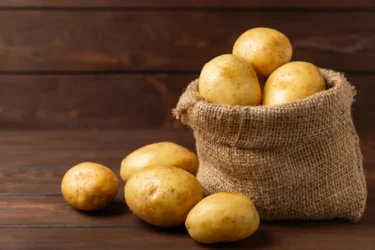
Though there are studies that show the potential uses of potato in various conditions, but these are insufficient and there is a need of further studies to establish the true extent of benefits of potato on human health.
Let me tell you that including potatoes in your diet will add good nutritional value. It is a good source of many macros and micronutrients. For instance, potassium is one of the minerals found in potatoes. Potassium aids in many systemic functions like maintaining electrolyte balance along with maintaining muscular, cardiovascular, and nervous system function. Therefore, eating potatoes might be highly beneficial11.
Dr. Rajeev Singh, BAMS
Potatoes are not only used as a vegetable for cooking at home, but also used as animal feed, fuel and as seed tuber for the next season potato crop7. Potatoes can be used in the following ways:
Surprisingly enough, allergic reactions may be a rare side effect of potatoes. Allergies from cooked potatoes are rare and uncommon and observed in infants. Immunoglobulin E (IgE)-mediated hypersensitivity and food protein-induced enterocolitis are the major factors that result in severe allergic reactions8.
The most common side effects of potatoes are:
However, if you experience any adverse reactions to it, immediately contact your Ayurvedic physician who has prescribed it to you. They will be able to treat you appropriately.
General precautions need to be followed while consuming cooked potatoes. Parents should take extra precautions before giving them to children.
Also Read: Brinjal (Baingan): Uses, Benefits, Side Effects and More!
The activity and the duration of action of a drug depend on its breakdown by specific enzymes. Some nutrients can interfere with these enzyme systems and might change the drug efficacy and course of action9. Potato produces specific natural components (glycoalkaloids), which inhibit the activity of the particular enzymes responsible for the breakdown of anaesthetic drugs. It leads to altering the drug’s metabolism process and time of action. Thus, diet can play a crucial role in patient recovery and wide variation in recovery time from anaesthetic drugs is seen in normal, healthy individuals9.
Also Read: Bottle Gourd (Lauki): Uses, Benefits, Side Effects and More!
Cooking potatoes at a high temperature leads to loss of essential nutrients. It also produces a small amount of acrylamide, which is a potential carcinogen (causes cancer)1. However, more research is required in this field as the information availbale is insufficient to draw conlusions.
Potato contains vitamin B6, vitamin C, riboflavin, niacin, thiamine and vitamin K, which might help in lowering the risk of various chronic and acute diseases1. However, there is a need for more studies to state the effects of potato and its constituents on human health.
Allergic reactions caused by cooked potatoes in infants are a major disadvantage of potatoes. Potato peel allergies are also observed in women causing asthma1,7. More data in the form of studies is required to know the exact type of reactions and the reason for its occurrence.
The potential use of potato for the skin might be mainly related to the apparent skin-lightening properties of raw potato. Rubbing potato on the face might help lighten scars. The slice may have to be used as it is because washing might lose its natural properties10. However, more research is required to know about the use of potato for the skin. Kindly consult a qualified doctor before using anything for your skin. Do not self-medicate.
Potato contains several phytochemicals such as flavonoids, phenolics, carotenoids and polyamines, which are highly desirable in a diet due to their beneficial effects on human health. They may play a crucial role in promoting the population’s health where potatoes form an essential part of the daily diet4.
Yes. Potatoes have a positive role in controlling hunger that contributes to satiety. Satiety is the feeling of fullness and the loss of hunger after eating. Boiled potatoes might help with weight loss by delaying subsequent meals and total calories consumed5. However, there is a need for more studies in this field. You should consult a doctor before using potatoes for any particular health benefits. Kindly do not self-medicate.
Disclaimer: The information provided here is for educational/awareness purposes only and is not intended to be a substitute for medical treatment by a healthcare professional and should not be relied upon to diagnose or treat any medical condition. The reader should consult a registered medical practitioner to determine the appropriateness of the information and before consuming any medication. PharmEasy does not provide any guarantee or warranty (express or implied) regarding the accuracy, adequacy, completeness, legality, reliability or usefulness of the information; and disclaims any liability arising thereof.
Links and product recommendations in the information provided here are advertisements of third-party products available on the website. PharmEasy does not make any representation on the accuracy or suitability of such products/services. Advertisements do not influence the editorial decisions or content. The information in this blog is subject to change without notice. The authors and administrators reserve the right to modify, add, or remove content without notification. It is your responsibility to review this disclaimer regularly for any changes.
Brinjal is scientifically known as Solanum melongena L. and belongs to the Solanaceae family. It is an annually growing plant of subtropical and tropical regions, grown extensively for its berry-like fruit. This crop is widely grown in China, Bangladesh, Philippines, India and Pakistan1.
This bushy plant is a rich source of flavonoids, alkaloids, and other bioactive compounds, like arginine, aspartic acids, etc. It has various common names such as Begun (in Bengali), Baigan (in Hindi), Vartaku (in Sanskrit), Vangi (in Marathi), and Brinjal (in English). It is confirmed that there are about 15-20 varieties of brinjals, making them available in a wide variety of colours, shapes, and from various countries. Brinjals have many Ayurvedic medicinal properties; hence, they are also known as the King of Vegetables1,2.
Did You Know?
Brinjals (Baingan) are an essential source of nutrients that are beneficial to human health.
Brinjal is grown mainly for food and medicinal purposes. The bioactive components of this plant might have potential helpful properties1. Some potential properties include:
Including brinjal in your diet may correct your iron balance. Consuming brinjal, which is known to have iron-chelating properties, may be beneficial for pregnant females, lactating mothers, and teenage females. The iron in eggplant has the potential to help with conditions like pre-menstrual syndrome, amenorrhoea, and antenatal anaemia5.
Dr. Siddharth Gupta, B.A.M.S, M.D (Ayu)
Brinjals are a unique source of nutrients and might be helpful to human health. Brinjals have been used in traditional medicine to manage many diseases4. Some of the potential uses of brinjal are described as follows.
Brinjal is a rich source of fibre and has low soluble carbohydrate levels, making it a potent option for managing type 2 diabetes. Studies4 found that brinjal might help with glucose levels in the blood in diabetic animal models. These studies showed that brinjal might be a good addition to the daily diet to help with oxidative stress, glucose levels and blood pressure in patients diagnosed with type 2 diabetes. However, more studies on humans are required.
Brinjal might effectively help with the digestion of lipids and their absorption into the body, which means that having brinjals regularly will allow you to enjoy your burgers safely too (somewhat at least). It also contains bioactive compounds, which might have the potential to solubilise serum triglycerides (fats) and cholesterol in the body and help manage body weight4. However, there is a requirement for more studies on this subject.
Brinjal might have beneficial effects against different types of cancer, such as lung cancer and gastric (related to the gut) cancer. The dietary fibre present in brinjal might promote the digestion of food. It may also eliminate the toxic wastes from the body that eventually helps with cancer of the stomach or colon4. This may indicate potential benefits of brinjal for cancer, however, studies are insufficient to establish the impact on human health.
Brinjal is composed of fat, vitamins, lots of water and minerals that might help with better skin tone and quality of skin, hair, and nails. It may also help with cancer of the skin2. However, much more extensive research is required in this area to state the above-mentioned potential uses as facts.
Though there are studies that show the benefits of brinjal in various conditions, these are insufficient, and there is a need for further studies to establish the true extent of the benefits of brinjal on human health.
Based on my experience, consuming a carotenoid-rich diet, such as eggplant, may help address vitamin A deficiency, which is a common problem among school-going children, particularly in developing countries. The carotenoids present in eggplant are easily converted into vitamin A in the body, providing a natural and accessible source of this essential nutrient.
Dr. Rajeev Singh, BAMS
Brinjal can be used in the following ways:
You must consult a qualified doctor before taking any herbal supplements. Do not discontinue or replace an ongoing treatment of modern medicine with an ayurvedic/herbal preparation without consulting a qualified doctor.
Incorporating dry eggplants into your diet may have potential benefits in the management of stomach bloating, gas, and piles. Dry eggplants are known to possess certain compounds that can help improve digestion, reduce gas formation, and alleviate symptoms associated with piles5.
Dr. Smita Barode, B.A.M.S, M.S.
In recent years, consumption of brinjal may have caused rare allergic reactions. However, some sensitive individuals are generally affected by a minor class of allergens present in brinjal. The potential allergen is found to be non-protein metabolites. The most common side effects of brinjal are itching of the throat, skin rashes all over the body, discomfort and hoarseness (gruffly voice). If such allergic reactions appear, consult your Ayurvedic physician immediately.
Also Read: Arrowroot Powder: Uses, Benefits, Side Effects By Dr. Smita Barode
Since allergic reactions are observed with brinjal consumption, general precautions need to be followed to avoid health issues. Please do not use herbs for self-treatment without consultation with a qualified doctor.
Also Read: Peanuts: Uses, Benefits, Side Effects and More
There is no evidence of the interactions between brinjal and other drugs. However, more research is required to confirm its safety in the presence of a drug.
Also Read: Raw Mango: Uses, Benefits, Side Effects By Dr. Smita Barode
Yes, the dietary fibre of brinjal might help with bowel movements, which might help with constipation2. However, more research is required to confirm the stated effects.
Brinjal contains iron and is also considered a chelator of iron that might help to capture iron molecules in the body. However, you should consult with a doctor and confirm if it’s entirely safe to eat it during pregnancy2.
Brinjal may have many advantages; it may help with diabetes, paralysis, killing of microorganisms, gas problems, and bone and dental issues. It may also help with stomach bloating, piles and gout2. However, there is a need for much more research to confirm such potential benefits.
Yes, brinjal contains chlorogenic acid and other essential substances that might trigger the immune system and produce antibodies that may be beneficial during viral or microbial infection2. However, more research is required to confirm these effects of brinjal on human health.
Brinjal contains niacin, thiamin, vitamin C, riboflavin, choline, vitamin B6, vitamin A, folate, vitamin K, beta-carotene and vitamin E3.
Disclaimer: The information provided here is for educational/awareness purposes only and is not intended to be a substitute for medical treatment by a healthcare professional and should not be relied upon to diagnose or treat any medical condition. The reader should consult a registered medical practitioner to determine the appropriateness of the information and before consuming any medication. PharmEasy does not provide any guarantee or warranty (express or implied) regarding the accuracy, adequacy, completeness, legality, reliability or usefulness of the information; and disclaims any liability arising thereof.
The common radish is scientifically known as Raphanus sativus L. It belongs to the family Brassicaceae. It is considered a root vegetable as it can store starch and other bioactive compounds. The shape of radish resembles actual roots. Its colour varies from white in Asia to red and different colours (green, purple and black) in Europe, although its flesh is white in most Asian and European countries. The intense flavour and diverse tastes of radish are owing to an essential compound known as isothiocyanate. Due to this characteristic flavour and taste, it is popular in countries such as Hawaii, Japan, and the Philippines1.
Radish is a low-calorie vegetable and a good source of a wider range of nutrients1.
Did you know?
Bioactive compounds such as polyphenols, glucosinolates and isothiocyanates contribute to the beneficial potential of radish1,3. It is also used as a remedy in Indian, Unani and Greeko-Arab to manage various conditions4. The potential properties of radish are:
The extracts of radish may be used to manage many conditions1. Let’s read on to see how munching on some radish can make you healthier.

Many studies show that radish extract contains antioxidants such as polyphenols that enhance insulin secretion. Further, radish extract was observed to potentially inhibit enzymes (glucosidase) that converts starch into simple sugars. It may augment the defence mechanism with its antioxidant activity, may reduce lipid peroxidation and oxidative stress. This may indicate that it may be helpful in maintaining energy metabolism and glucose uptake and may reduce glucose absorption in the blood4. However, Before using radishes or any other herbal remedies for diabetes, have a consultation with your Ayurvedic doctor provider so that he can guide you with correct choices.
In my perspective, radish might be a powerhouse of nutrients that may offer multiple health benefits. They are packed with antioxidants, calcium, and potassium, all of which may contribute to lowering high blood pressure and reducing the risk of heart disease. Additionally, radishes are a natural source of nitrates, which might improve blood flow throughout the body.
Dr. Siddharth Gupta, B.A.M.S, M.D (Ayu)

Several studies have recorded the potential beneficial effects of radish extract for the liver. In a study3, the bioactive compounds in radish root and sprouts were found to reduce the seriousness of fatty liver disease in animal models. In another study on animal models, black radish extracts exhibited liver protective effects. Further, the administration of a radish extract resulted in reduced oxidative stress and prevented fat accumulation. The effects shown by radish could be credited to the antioxidant activity of bioactive compounds present in radish extracts.
Therefore, it may help with the decrease in the levels of enzymes that indicate liver damage and the reduced levels of lipids and cholesterol suggest that radishes might indeed have potential benefits for liver. Further studies are needed to establish the benefits of radish for the human liver. If you are suffering from any liver-related issues, consult your doctor before using radish or any other herbal remedies.
From what I have seen and read, radish may have great benefits for the urinary and kidney function. Thus, by including radishes in your diet, you may contribute to the overall health of your urinary and kidney systems7.
Dr. Rajeev Singh, BAMS

Due to the presence of secondary metabolites such as glucosinolates, eating may have benefits that may help people with cancer. Detoxification enzymes, prevention of cell cycle progression, and activation of apoptosis (cell death) are the potential anticancer mechanisms that may be exhibited by bioactive compounds present in radish as per studies. These are responsible for the anticancer activity of radish against different types of cancer cell lines3.
Cancer is a severe medical condition that requires medical diagnosis and treatment. Before using any herb or fruit, consult your doctor.

In a study5 conducted on animal models, it has been shown that saponins extracted from radish may be helpful with the loss of human hair. The radish crude saponin-treated group demonstrated the potential benefits for hair follicles (HFs) in the deep part of the skin and may ultimately develop HFs corresponding to the anagen phase (or active phase) of the hair-growth cycle. The benefits of radish are not sufficiently studied for human hair. If you face hair fall, reach out to your healthcare provider for a consultation.
Though the studies above show the benefits of radish in various conditions, but these are insufficient and there is a need of further studies to establish the true extent of benefits of herb on human health.
The edible part of radish is mainly its roots. Also, we can eat its leaves, pods, seeds, flowers and sprouts of radish in various forms1,3. Radish can be used in the following ways:
You must consult a qualified doctor before taking any herbal supplements. Do not discontinue or replace an ongoing treatment of modern medicine with an ayurvedic/herbal preparation without consulting a qualified doctor.
In a study6 on animal models, it has been seen that feeding animals with high quantities of radish led to certain side effects on the thyroid glands and its functioning as described as follows:
Therefore we should take care while consuming radish in large quantities and it is better to enjoy it in moderate amounts6. Moreover if you observe discomfort or any other uncomfortable symptoms on eating radish, you must consult your Ayurvedic physician. They will be able to assess the situation and guide you regarding the course of action further. Even natural preparations can show specific side effects on individuals as everyone’s body reacts differently to certain compounds present in them.
Also Read: Karela (Bitter Gourd): Uses, Benefits, Side Effects and More!
Radish is generally considered to be safe if it is taken in the recommended dosages and as food. However, general precautions should be followed while consuming radish. Please do not try to treat yourself by consuming herbs. Ayurvedic herbs may have potential benefits, but it is advisable to consult a qualified Ayurvedic physician before taking any herb for its health benefits.
Studies on animal models show that having too much radish can cause an increase in the level of thyrotropin6. However, no valid study provides evidence on safety precautions to be followed with radish extracts. However, extra care needs to be taken by pregnant women, lactating mothers, children, and older people while having radish. In case of any unusual symptoms, immediately consult your Ayurvedic physician.
Also Read: Bottle Gourd (Lauki): Uses, Benefits, Side Effects and More!
We cannot deny the possibility of certain drugs reacting with herbs and food like radishes. Therefore, it is essential to consult your Ayurvedic physician before consuming any herbal item in more than regular quantities. Your Ayurvedic physician can appropriately modify the dosage and prescribe as per your current medications, conditions, and requirements.
Also Read: Pudina (Mint): Uses, Benefits, Side Effects & More!
The root is usually consumed in the diet as pickles, salads or cooked in curries, but it may develop conditions like hypoactive thyroid gland (where your thyroid gland does not produce enough hormones). So, radish should be eaten in a moderate amount6.
Yes. There are several potential benefits of radish for the liver stated in studies. It may help to manage lipids and cholesterol levels and may potentially reduce oxidative stress due to its bioactive compounds. Several animal studies documented the benefits of radish in fatty liver disease, liver cancer owing to its liver-protective properties3. However these studies are insufficient to identify the benefits of radish for liver in humans. You must always consult your doctor for advice.
Yes. The extract of radish contains saponins that may help with human hair fall. Animal studies have shown its ability to increase the number of hair follicles by supporting the active phase of hair growth5. But further studies are needed to understand its actual potential for human hair.
Studies show that radish has many potential benefits against cancer due to its anti-cancer properties. Cancer is a serious medical condition that may need medical diagnosis and treatment. Before using any herb or fruit for such conditions you must consult your doctor for accurate advice3.
There is no scientific evidence validating whether eating radishes raw or cooked is more beneficial. However, there are similar benefits to eating raw radish and cooked radish.
Disclaimer: The information provided here is for educational/awareness purposes only and is not intended to be a substitute for medical treatment by a healthcare professional and should not be relied upon to diagnose or treat any medical condition. The reader should consult a registered medical practitioner to determine the appropriateness of the information and before consuming any medication. PharmEasy does not provide any guarantee or warranty (express or implied) regarding the accuracy, adequacy, completeness, legality, reliability or usefulness of the information; and disclaims any liability arising thereof.
Links and product recommendations in the information provided here are advertisements of third-party products available on the website. PharmEasy does not make any representation on the accuracy or suitability of such products/services. Advertisements do not influence the editorial decisions or content. The information in this blog is subject to change without notice. The authors and administrators reserve the right to modify, add, or remove content without notification. It is your responsibility to review this disclaimer regularly for any changes.
Mulberry, scientifically known as Morus alba, belongs to the family Morceau. It is considered one of the most significant medicinal plants, valued for its wide-ranging therapeutic uses. The Latin word ‘mor-us’, meaning “oddly enough,” is believed to have influenced the origin of the word “maul.” The genus Morus includes several notable species, such as the native red mulberry (Morus rubra), the East Asian white mulberry (Morus alba), and the southwestern Asian black mulberry (Morus nigra)1,2.
The fruits of mulberry are known as toot or shahtoot (meaning king’s mulberry) are sweet, juicy, and mouth-watering. These fruits grow on deciduous trees found in temperate regions including India, China, Japan, North Africa, Arabia, and Southern Europe. The leaves of the mulberry tree are the sole food source for silkworms and have significant value in the pharmaceutical, cosmetic, and food industries. Owing to its diverse benefits, the tree is often referred to as Kalpavriksha, or the “wish-fulfilling tree”2,3.
Mulberry contains a variety of valuable nutritional components. The fruits are particularly rich in organic compounds such as zeaxanthin, anthocyanins, phytonutrients, lutein, resveratrol, and a broad spectrum of other polyphenolic compounds.
Nutritional value of mulberry (raw fruit) per 100 gram4:
Several studies have found that the extracts from various parts of the mulberry plant may possess a range of properties that could support health and wellbeing, as outlined below2:
From my experience, I can say that mulberries offer remarkable potential benefits. Due to their rich content of vitamin C and iron, mulberries may help support individuals with anaemia by contributing to improved iron absorption and overall blood health. However, their use should always be discussed with a healthcare professional9.
Dr. Siddharth Gupta, B.A.M.S, M.D (Ayu)

Some of the potential benefits of mulberry are described as follows:
Mulberry is rich in iron, a mineral not commonly found in high amounts in most fruits. The presence of iron may support the production of red blood cells, which in turn helps improve the delivery of oxygen to the body’s organs and tissues. This suggests that mulberries might contribute to a healthy metabolism and support the optimal functioning of various bodily systems4.
Mulberries may help to improve digestion as they contain high dietary fibre content. The dietary fibre obtained from a single serving of mulberries is about 1.85 mg for a 100 grams serving4. The dietary fibre in mulberries adds bulk to the stool, which helps to enhance the movement of food through the digestive tract, thereby supporting healthy digestion. This may be beneficial in managing common digestive issues such as stomach cramps, bloating, and constipation3.
Mulberry fruits contain carotenoids, one of which is zea-xanthin. Zea-xanthin acts as an antioxidant and may have potential benefits to maintain retinal health. Free radicals lead to degeneration of the central part of the retina called the macula and may lead to cataracts. Zea-xanthin from mulberry fruits may be able to reduce oxidative stress on the retinal cells due to these free radicals. Thus, it may indicate that mulberry may have the potential to slow down cataract formation3. Further research is needed to evaluate the potential effects of mulberries on cataract development and progression in the human eye.
Mulberry is rich in antioxidants such as vitamin A, vitamin C, anthocyanins, and various other polyphenolic compounds. Antioxidants play a key role in defending the body against free radicals, which are harmful by-products of cellular metabolism. These free radicals can damage healthy cells and may contribute to the mutation of normal cells into cancerous ones. Antioxidants found in mulberries may help neutralise these free radicals, potentially reducing the extent of cellular damage they cause3. Further research is necessary to determine the effects of mulberries on free radicals linked to cancer development.
The extract of mulberry leaves may play a role in catalysing the metabolism of glucose. Animal studies1 have shown that mulberry leaf extract may help lower high blood glucose levels. However, human studies are needed to assess the effects of mulberries on blood glucose levels in people2.
Mulberry is a particularly rich source of vitamin C. Vitamin C contributes to the maintenance of a healthy immune system. A single cup of mulberries can provide approximately the daily recommended amount of vitamin C3. However, any claims regarding the effects of mulberries on immunity require further scientific validation, and their use should be guided by qualified healthcare professionals.
Mulberry fruits contain significant amounts of vitamins A and E, as well as various carotenoids. These compounds act as antioxidants, which may help protect the skin, hair, and other tissues from damage caused by free radicals. Antioxidants are believed to contribute to maintaining a smooth skin appearance and may support healthy, shiny hair. However, further scientific research is needed to confirm these effects, and mulberries should be used as part of a balanced diet rather than as a treatment3. Mulberry may have a role in managing oily or acne-prone skin by potentially reducing oil secretion and inflammation2. However, further research is required to fully understand its potential benefits and safety in humans.
Mulberry leaves contain a flavonoid called resveratrol, which may help relax blood vessels by increasing the production of nitric oxide (NO), a natural vasodilator. This effect could potentially reduce the risk of blood clot formation. While these properties suggest possible cardiovascular benefits, including support for heart health, further research is needed to confirm these effects in humans2,6. However, current studies are insufficient to conclusively establish the effects of mulberries on human heart health, and further research is required to validate these potential benefits.
While some studies suggest potential benefits of mulberries for various conditions, the current evidence is limited. Further research is necessary to establish the full extent of their effects on human health.
I suggest considering mulberry as part of a balanced diet to support weight management. Mulberry may assist in this regard by potentially inhibiting lipid absorption, according to some studies. However, further research is needed to fully understand its effects10.
Dr. Rajeev Singh, BAMS
Mulberry can be used in the following ways5:
You must consult a qualified doctor before taking any herbal supplements. Do not discontinue or replace any prescribed modern medical treatment with Ayurvedic or herbal preparations without medical advice.
Also Read: Kiwi: Uses, Benefits, Side Effects and More!
A few side effects that were observed in studies on consuming mulberry fruit are3:
However, if you experience any adverse reactions to mulberries, immediately contact a doctor as they will be able to guide you appropriately to manage your symptoms.
Here’s a health tip: Mulberry is a natural source of flavonoids, a type of polyphenolic compound, which act as antioxidants. These antioxidants may help protect the body from oxidative damage, potentially playing a role in managing conditions associated with oxidative stress, such as atherosclerosis. Further research is needed to confirm these effects in humans11.
Dr. Smita Barode, B.A.M.S, M.S.
Consuming mulberries in moderate amounts is generally considered safe. However, it is important to follow general precautions when including mulberries in your diet.
Also Read: Chirata: Benefits, Side Effects, Precautions and More!
A clinical study8 suggested that having large amounts of black mulberry juice could interact with drugs that were reported to inhibit cytochrome enzymes; thus it may inhibit the metabolism of various drugs7. Therefore, you must always seek the advice of your Ayurvedic physician and follow their prescription carefully, as they are best placed to consider your health condition and any other medications you may be taking.
Also Read: Blueberries: Uses, Benefits, Side Effects, and More!
Mulberry (Shahtoot) is rich in vitamin A, vitamin E, and carotenoids, all of which are known for their antioxidant properties. These compounds may help support healthy skin by potentially reducing the appearance of scars, age spots, and promoting a smoother, more youthful appearance. Additionally, mulberry leaf extract may be beneficial for individuals with oily or acne-prone skin; however, further studies are needed to confirm these effects in humans.
Various parts and extracts of three major species of the genus Morus may be used, these are:
-Root, stem, leaves, and fruit of Morus alba (white mulberry)
-Root, leaves, and fruits of Morus nigra (black mulberry)
-Root and fruits of Morus rubra (red mulberry).
The immortal mountain wizard tree is a type of tea made from Mulberry leaves. After drying mulberry leaves under the sun, the leaves are brewed to make a tea.
There is no evidence of mulberry fruit or leaf being poisonous. However, one must follow general precautions while taking any herb in large quantities.
Yes, the antioxidants present in mulberry leaf extract may help counter the effects of free radicals that contribute to oxidative damage in hair. This could support the maintenance of healthy, shiny hair. However, further research is required to confirm these potential benefits in humans.
Disclaimer: The information provided here is for educational/awareness purposes only and is not intended to be a substitute for medical treatment by a healthcare professional and should not be relied upon to diagnose or treat any medical condition. The reader should consult a registered medical practitioner to determine the appropriateness of the information and before consuming any medication. PharmEasy does not provide any guarantee or warranty (express or implied) regarding the accuracy, adequacy, completeness, legality, reliability or usefulness of the information; and disclaims any liability arising thereof.
Star fruit is scientifically known as Averrhoa carambola. It belongs to the family Oxalidaceae. It has many different species, namely, A. dolichocarpa, A.microphylla, A.leucopetala, A.bilimbi and A. carambola. However, A. carambola is most cultivated and exported species native to southeast Asia1. Star fruits are juicy, crunchy and a mixture of slightly sweet and sour tastes. They are usually green when small and unripe and turn yellow when ripen. The name ‘star fruit’ was coined because of the longitudinally stretched ridges of oval-shaped carambola fruit that give the appearance of a star when cut cross-sectionally2,4.
Star fruit contains various nutrients such as vitamins (B1, B2 and C), minerals, and bioactive compounds. It is a good source of fibre and contains cellulose, hemicellulose and pectin. Star fruit may help with various diseases related to the brain, heart and stomach1,3.
Star fruit contains various nutrients such as vitamins (B1, B2 and C), minerals, and bioactive compounds. It is a good source of fibre and contains cellulose, hemicellulose and pectin. Star fruit helps manage various diseases related to the brain, heart and stomach1,3.
Star fruit has a very high amount of nutrients.
The potential properties of star fruit are given as follows:
The scientific name of ‘Star fruit’ is Averrhoa carambola. The word carambola is a derivation of the Sanskrit word karmaranga which means “food appetizer”. Also, in Malayalam, it is known as a carambola.
Dr. Siddharth Gupta, B.A.M.S, M.D (Ayu)
The potential of star fruit for various health-related issues might be described as follows.

Star fruit contains insoluble fibre that may help decrease the absorption of carbohydrates in the body. The crude extract of star fruit might also significantly lower blood glucose levels and triglycerides levels and increases insulin levels in the blood. These findings indicate that it may help in the potential management for diabetes3.

The leaves of star fruit are rich in vitamin C and bioactive compounds like phenols and flavonoids, which are abundant sources of natural anti-oxidants3. These anti-oxidants might help in scavenging free radicles such as peroxides and hyperoxides and may remove inflammation-causing toxins from the body1.
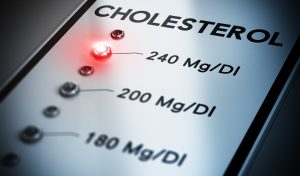
A study found that star fruit decreases lipid levels, significantly lowers cholesterol levels by reducing body mass index, atherogenic index (reflects the value of triglycerides and high-density lipoprotein) and liver cholesterol in animal models, preventing the development of non-alcoholic fatty liver disease. It may help with cholesterol levels owing to its high fibre and low-fat content2,3.
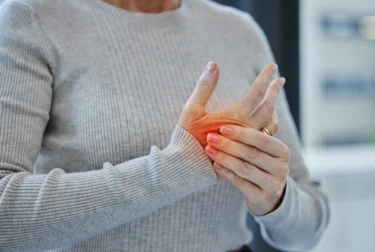
Star fruit is a rich source of vitamin C and minerals that may help reduce swelling of joints, dermatitis (skin inflammation) and psoriasis (rash and formation of dry patches on the skin)5. Due to its potential anti-inflammatory properties, star fruit may also help with sore throat and cough and has been used in ancient times1.

Star fruit (Kamrakh) has a good amount of electrolytes such as sodium and potassium that may help to regulate blood pressure and might help with heartbeat and blood flow. Calcium present in star fruit may also help with the tension in arteries and might lower the risk of developing heart diseases such as heart attack and stroke3.

The extract from the leaves of star fruit might help with stomach discomfort and the formation of ulcers. It also contains bioactive compounds and mucilage that may provide a lining to digestive mucosa, helping with the damage caused by gastritis1.

The leaf, fruit and bark of star fruit have been found to have a potential to inhibit the growth of various bacteria and fungi, exhibiting anti-microbial activity. The leaf extracts of star fruit might have a potential to inhibit the growth of Gram-positive and Gram-negative bacteria such as S. aureus, Klebsiella spp., E. coli, P. aeruginosa and B. cereus1,3.

Star fruit contains vitamin C, which might not only help in scavenging free radicals, but also may produce a high level of white blood cells and might help build a strong immune system3.

Consumption of star fruit might be beneficial in lowering the risk of developing cancer. Polyphenols like proanthocyanin, gallic acid and vitamin C are present in star fruit and may act as strong antioxidants. These antioxidants may scavenge peroxides and hyperoxides, assist the immune system and help with the toxins of the body, which may potentially be helpful for cancer. Star fruit extract might have a potential effect against tumour cells and might decrease tumour yield and tumour burden and increase healthy cell viability, survival time and levels of haemoglobin, red blood cell (RBC) and white blood cell (WBC)1,3.
Though there are studies that show the benefits of star fruit in various conditions, but these are insufficient and there is a need of further studies to establish the true extent of benefits of star fruit on human health.
In India, people mix the roots of star fruits with sugar to make an antidote for poisoning. Moreover, ripe star fruit may help in reducing bleeding in patients with haemorrhages. Dried star fruit might help bring down fevers.
Dr. Rajeev Singh, BAMS
Starfruit can be used in the following ways:
You should always consult your Ayurvedic physician before consuming star fruit in large quantities or for therapeutic benefits. They will be the best person to prescribe you the correct form and dosage as per your health condition.
You must consult a qualified doctor before taking any herbal supplements. Do not discontinue or replace an ongoing treatment of modern medicine with an ayurvedic/herbal preparation without consulting a qualified doctor.
Did you know starfruit has a use in production of alcohol? It can be fermented and used as raw material to make alcohol. It can be done with the help of yeast like Saccharomyces cerevisiae by producing ethanol and carbon dioxide8.
Dr. Smita Barode, B.A.M.S, M.S.
Star fruit contains essential bioactive components oxalic acid and caramboxin, which are harmful to patients suffering from kidney diseases. Excessive consumption of star fruit can result in vomiting, hiccups (involuntary contractions of the diaphragm), mental confusion and death. It is recommended that individuals with kidney stones, kidney failure or undergoing management of dialysis should not consume star fruit. Excess consumption of star fruit could result in neurotoxicity leading to fits3,6.
Star fruit is generally considered to be safe if it is taken in the moderate amounts. However, general precautions have to be followed while consuming star fruit. Excessive intake of star fruit might cause acute kidney damage, especially if taken on an empty stomach or in dehydration. Therefore, it is not advised for elderly patients or individuals on an empty stomach to have star fruit3. If any health-related issue appears, consult your Ayurvedic physician.
Depending on how ripe they are, starfruits have different flavours. Unripe fruit tends to be firmer and tarter, making it suited for savoury meals. It is best for desserts and other sweet meals as it ripens since it gets sweeter and juicier9.
Dr. Anuja Bodhare, B.A.M.S, M.D (Ayu)
Also Read: Water Apple: Uses, Benefits, Side Effects, And More!
Consumption of star fruit in any form with medications undergoing cytochrome P450-mediated metabolism may lead to an increase in their effective dosage within the body7. Since star fruits have several documented nutritional and therapeutic advantages, but they are harmful to people with kidney issues due to the presence of bioactive compounds in the fruit. Individuals undergoing kidney treatment should avoid the consumption of star fruit1,3,5. Kindly, consult a qualified doctor and ask them if it is safe for you to eat star fruit. Please do not self-medicate or discontinue any ongoing treatment. Your doctor is the only one authorised to make changes to your treatment if and when necessary. The choice of treatment or adjustments to it are at the discretion of your doctor basis your consultation with them.
Also Read: Mangosteen: Uses, Benefits, Side Effects and More!
Owing to its high nutritional value1 and its ability to increase haemoglobin level3. it may help with the growth and development of the baby. However, due to the lack of sufficient safety data and the property of star fruit causing nephrotoxicity and neurotoxicity3,6. it is advised to consult your Ayurvedic physician before consuming it during pregnancy.
Star fruit contains many nutritional components that might help with your health. It might help to regulate blood pressure and blood glucose level, may improve metabolism and digestion, might enhance immunity and might help with inflammation1,6. However, there is a need for more studies to be sure and regard its use for health related issues.
Yes. A few studies have shown that star fruit contains a high amount of insoluble fibres, which allow slow absorption of carbohydrates. This might help with blood glucose levels in persons with diabetes1. However, there is insufficient data. Therefore, there is a need for more studies on this subject.
Star fruit can be eaten as a whole fruit, ripe or unripe. The unripe fruit is eaten as a snack with rock salt, while the ripe fruit can consume as jams, jellies and juices. The extract of the leaf of star fruit might be prescribed by your Ayurvedic physician as an anti-inflammatory and anti-microbial agent1. However, more studies are required for its use.
No. Individuals suffering from kidney diseases are not advised to consume star fruits. Eating star fruit in such conditions can lead to acute kidney damage, seizures and even death3. Kindly consult your physician for using star fruit. Do not self-medicate or discontinue an ongoing treatment on your own.
Star fruit is usually safe to consume unless the person is suffering from kidney diseases or on medication metabolised by cytochrome P4503,7. However, there is a need for more studies on this subject as the available data is insufficient. Therefore, you should consult a doctor before using star fruit.
Disclaimer: The information provided here is for educational/awareness purposes only and is not intended to be a substitute for medical treatment by a healthcare professional and should not be relied upon to diagnose or treat any medical condition. The reader should consult a registered medical practitioner to determine the appropriateness of the information and before consuming any medication. PharmEasy does not provide any guarantee or warranty (express or implied) regarding the accuracy, adequacy, completeness, legality, reliability or usefulness of the information; and disclaims any liability arising thereof.
Links and product recommendations in the information provided here are advertisements of third-party products available on the website. PharmEasy does not make any representation on the accuracy or suitability of such products/services. Advertisements do not influence the editorial decisions or content. The information in this blog is subject to change without notice. The authors and administrators reserve the right to modify, add, or remove content without notification. It is your responsibility to review this disclaimer regularly for any changes.
Lagenaria siceraria, known as bottle gourd in English and Lauki in Hindi, is a common vegetable in India. Bottle gourd has been used traditionally to help with many health conditions like fever, cough, pain, and asthma. It has been used since ancient times for its benefits. It is also considered a good source of vitamin B, C, and other nutrients. It is known for its shape, a bottle, a dumbbell, or an oval shape.
You may find bottle gourd boring to eat, but it is considered one of the earliest plants to be cultivated on Earth. It may also be packed with many health-promoting benefits. If you want to learn more about the bottle gourd or lauki, continue reading.
Nutritional value of bottle gourd per 10 grams of serving1:
Bottle gourd might have the following properties:
Bottle gourd might have properties that may be good for the liver, as per several animal studies. Bottle gourd may offer many potential benefits, helpful in liver condition and functions. These possible benefits have been observed in animal trials3. You must still contact your doctor before using a bottle gourd for any liver ailment.
Consuming bottle gourd may show beneficial effects on the memory. Certain compounds in bottle gourd may show pain-relieving and central nervous system (CNS) depressant activity by acting on the brain. CNS depressant activity might indicate its possible effects on calming the mind3. Before using a bottle gourd for its benefits for the brain, you should contact your doctor and get a proper diagnosis and treatment.
Bottle gourd (Lauki) extract might act against the cancerous cells, as per an animal study4. In addition, its stem extract may show potent cytotoxic (toxic to cells in the body) activity against cancer cell lines as per a laboratory study5. This anticancer activity of bottle gourd may be attributed to its potential antioxidant and cytotoxic abilities. These potential benefits of bottle gourd have been studied in laboratory studies. However, you must consult your doctor before using any herbal supplement or remedy to replace or discontinue ongoing treatment.
Bottle Gourd has been traditionally used to help with diabetes. Because of the low fat and high fibre content, bottle gourd may be recommended as the food of choice for people having diabetes. Bottle gourd extract could effectively reduce the blood glucose levels in diabetic animals, as indicated by an animal trial. The potential anti-diabetic benefits of bottle gourd have been observed in animal trials6, and more studies are needed to validate these properties in humans.
Bottle gourd might be a good option for losing weight as it is low in calories and contains mostly water7. It is also rich in dietary fibre and contains low fat and cholesterol. These properties may help with weight management. You can add bottle gourd to your regular diet to help you manage weight. However, before using any herbal remedy for weight loss, you need to consult your doctor about its potential uses and side effects.
Bottle gourd is a good source of vitamin C and zinc that may offer several skin benefits. Vitamin C is an essential vitamin for overall skin health. It may protect the skin from the damage caused by ultraviolet radiation8. It may also help to prevent signs of skin ageing, such as skin sagging. It may also help strengthen the skin barrier by enhancing the production of skin barrier lipids9.. If you are suffering from any skin ailments, contact a skincare doctor or dermatologist, as they will be able to guide you about the uses and limitations of herbs and vegetables.
Though there are studies that show the benefits of bottle gourds in various conditions, these are insufficient, and there is a need for further studies to establish the true extent of the benefits of bottle gourds on human health.
All plant parts, including fruits, leaves, stems, bark, fruit rind, seeds, and oil, also might be used in traditional medicine.
You must consult a qualified doctor before taking any herbal supplements. Do not discontinue or replace an ongoing treatment of modern medicine with an Ayurvedic/herbal preparation without consulting a qualified doctor.
Drinking bottle gourd juice that tastes bitter may cause severe poisoning reactions. The symptoms of bottle gourd juice poisoning may involve vomiting, abdominal pain, diarrhoea, hematochezia (blood in stools), haematemesis (vomiting blood), shock, and even death6. You must always consult your doctor immediately if you observe any of these symptoms.
Also Read: Alum: Uses, Benefits & Side Effects
Some of the precautions to take with bottle gourd are:
Before using a bottle gourd for its medicinal benefits, reach out to your healthcare provider.
Also Read: Jaggery: Uses, Benefits, Side Effects and More
There is a lack of sufficient data to prove the safety or interactions of bottle gourd with other medications. Therefore, if you are taking any medicines, you must consult your doctor regarding potential interactions with foods and vegetables. They will be able to guide you better regarding the precautions and interactions of a specific medicine.
Also Read: Lychee: Uses, Benefits, Side Effects and More By Dr. Rajeev Singh
Bottle gourd or lauki contains plenty of vitamin C. Vitamin C may be beneficial for skin health. Vitamin C might be valuable for protecting the skin from ultraviolet-induced damage. Bottle gourd juice may be used as a source of vitamin C.
Bottle gourd has low-calorie content, and it contains mostly water. Bottle gourd is also rich in dietary fibre. The nutritional value of bottled gourd juice may make it a good choice for people who want to eat healthily and manage weight. However, there is a lack of data supporting its usage and beneficial effects on humans. You may meet a doctor or dietician to gain more insight into weight management methods.
Bottle gourd may show good nutritional value and contain plenty of vitamins, minerals, and carbohydrates. Bottle gourd juice might be consumed for its nutritional benefits. It may also help keep the liver healthy and may also help with disease conditions and skin health.
Disclaimer: The information provided here is for educational/awareness purposes only and is not intended to be a substitute for medical treatment by a healthcare professional and should not be relied upon to diagnose or treat any medical condition. The reader should consult a registered medical practitioner to determine the appropriateness of the information and before consuming any medication. PharmEasy does not provide any guarantee or warranty (express or implied) regarding the accuracy, adequacy, completeness, legality, reliability or usefulness of the information; and disclaims any liability arising thereof.
Raw papaya is often overlooked, but it is completely loaded with health benefits. Rich in nutrients and available year-round, it’s considered a powerhouse of nutrition and is widely recognized for its value.
The raw papaya plant itself is regarded as a valuable nutraceutical fruit. Its botanical name is Carica papaya Linn, and it belongs to the Caricaceae family. Originally native to southern Mexico and Costa Rica, the papaya plant has since spread to tropical and subtropical regions, including India, Sri Lanka, Australia, Hawaii, the Philippines, and South Africa1. Known by many names such as papita, papaia, pawpaw, papayabaum, and arabd-kharpuja, papaya has a global presence.
Read on to learn more about this multipurpose commercial fruit crop.
Papaya is a commoner’s fruit due to its low cost and high nutritional value. Papaya contains a vast array of phytochemicals, including proteins, fats and oils, enzymes, polysaccharides, flavonoids, vitamins and minerals. Papaya is pretty low in calories and has a high amount of vitamin C1.
The nutritional value of raw papaya per 100 grams is as follows:
Papaya contains various biologically active plant chemicals that might be used for different purposes.1 Papaya might have the following properties:
The whole plant of papaya might have beneficial value. It has various phytochemicals like enzymes, vitamins and minerals. Some of its potential uses are given below.2
Eating raw papaya might benefit the food digestion process. Unripe papaya might contain a good amount of digestive enzyme, which might be an excellent aid to digestion. It may help in the smooth digestion of protein present in the food. People who cannot digest wheat gluten may tolerate it if it is mixed with the white latex of raw papaya. It has the crude papain enzyme, which might help solubilise gluten protein5, 6. Hence, it may be used by people who have trouble with the digestion of protein-containing food items.
Papaya fruits might be used in topical ulcer dressing, which might help wound healing. It may be used in the burn dressings of children. It may also reduce the odour associated with long-term skin ulcers7. The papaya fruit pulp may be mashed and applied to the infected burn wounds8, which may help deal with infection development. The potential mechanism could be the enzymatic action of papain as well as the antimicrobial activity of papaya fruit.
Raw papaya may be valuable for restoring and rebuilding damaged skin. The peel of papaya contains vitamin A and might be used as a skin-lightening agent. If you apply a mixture of papaya peel with little honey to your skin, it may act as a moisturiser and make your skin look smoother9. The rubbing action of the white papaya pulp might help improve pimples and wrinkles on the facial skin due to its good bleaching activity. It may also remove the dead skin cells allowing the lightening of skin colour9.
In my opinion, papaya is a skin miracle-worker! Its β-carotene and lycopene content can’t replace sunscreen, but they might help protect against sunburn and boost the skin’s defence mechanism against UV damage. Enjoy papaya for a healthy and happy skin glow!
Dr. Smita Barode, B.A.M.S, M.S.
Eating raw papaya might help to reduce the risk of the formation of colon cancer and prostate cancer in men10. The fruits of papaya contain dietary fibre, which may bind to the toxins present in the colon that may cause cancer-related to the colon. Raw papaya might help sweep these toxins from the body, keeping a healthy environment inside the colon. These nutrients might also protect colon cells from the damages caused by the free radicals.
Though there are studies that show the benefits of raw papaya in various conditions, but these are insufficient and there is a need of further studies to establish the true extent of benefits of raw papaya on human health.
I would recommend giving fermented papaya a try and enjoying its tasty superpowers! Fermented papaya is a fantastic fruit. Studies2 have shown that it might help pre-diabetics by boosting their antioxidants and protecting their red blood cells from harmful stress.
Dr. Siddharth Gupta, B.A.M.S, M.D (Ayu)
Papaya is a healthy and delicious fruit. It may be used in various ways.
You must consult a qualified doctor before taking any herbal supplements. Do not discontinue or replace an ongoing treatment of modern medicine with an Ayurvedic/herbal preparation without consulting a qualified doctor.
I would suggest trying fermented papaya if you’re looking for a tasty and fun way to protect yourself against age-related and neurological diseases. One research4 shows that Alzheimer’s is linked to oxidative stress, but guess what? Fermented papaya may comes to the rescue! It might help counteract those free radicals that love to wreak havoc in our bodies.
Dr. Rajeev Singh, BAMS
Also Read: Papaya Leaves and Seeds to Treat Fever and Other Ailments
The side effects of raw papaya may be related to women’s health.
Ayurvedic herbs may have specific side effects and may react differently in every people. Ensure that you consult an Ayurvedic physician before using it for proper guidance.
Eating raw papaya may be considered safe. However, general precautions need to be followed.
We recommend you consult your Ayurvedic physician before having papaya for medicinal purposes. They will be the correct person to guide you about the safe dosage form.
Also Read: Benefits of Pineapple for Health, Skin and Hair
There is not enough information available on the interaction of raw papaya with other drugs. However, this does not mean that there are no interactions at all.
Therefore, it is always better to follow the advice of an Ayurvedic doctor. They will prescribe you the best way to have it.
Also Read: Mulberry (Shahtoot): Uses, Benefits, Side Effects and More!
Raw papaya has a low-calorie content, which may make it a suitable fruit for obese people who can include it in their regular diet13. Thus, it may help to manage weight.You must consult your nutritionist for best advice on weight loss.
The three main powerful antioxidant vitamins present in papaya are vitamin A, vitamin C, and vitamin E.
Papaya might be a good source of dietary fibre, which may help to lower the high cholesterol levels in the body13. However, people should seek the advice of an Ayurvedic doctor before using it to manage the cholesterol in the body.
Papaya has different names, such as Erandakarkati in Sanskrit, Omakai in Malayalam, Pharangi in Kannada, and Pappali in Tamil. The international names include Tree Mellon, Mamao, and pawpaw.
Other components, including seeds, leaves, roots, flowers, and stem bark, may also be utilized since they have potential applications for managing a variety of human ailments.
However, before utilizing any of the plant’s sections as a herb, we advise that you first consult your doctor.
Disclaimer: The information provided here is for educational/awareness purposes only and is not intended to be a substitute for medical treatment by a healthcare professional and should not be relied upon to diagnose or treat any medical condition. The reader should consult a registered medical practitioner to determine the appropriateness of the information and before consuming any medication. PharmEasy does not provide any guarantee or warranty (express or implied) regarding the accuracy, adequacy, completeness, legality, reliability or usefulness of the information; and disclaims any liability arising thereof.
Water apple is a small, bell-shaped juicy fruit. It is glossy and pink to red in appearance with a sweet, low acidic taste and has white flesh with a rose-scented aroma. The luscious water apple is scientifically known as Syzygium aqueum and belongs to the botanical family Myrtaceae. The water apple plant is native to Indonesia and Malaysia and grows in all tropical regions of Africa and Southern Asia, including India and Thailand1,2.
Water apples are considered fruit crops. They were used in traditional and folk medicine systems due to their vast amount of essential nutrients. The common names of water apples are rose apple, Malabar plum, and plum rose1,2.
So, readers come along with us to know more about this deliciously juicy fruit.
The water apple contains essential nutrients, such as vitamins, minerals, fibre, carbohydrates and proteins. The water apple is a low caloric fruit due to its low fat and calorie content and high water content, which is approximately 90%1. The nutritional value of water apple is as follows:
The water apple contains various bioactive compounds that may show multiple biological properties that may benefit human health1. Water apples might have the following properties:
In my view, eating water apples may have some incredible benefits for your skin. They are loaded with antioxidants that might help fight off those unwanted signs of ageing, like wrinkles. So, next time you’re craving a snack, reach for a water apple and give your taste buds along with your skin a little extra love4.
Dr. Siddharth Gupta, B.A.M.S, M.D (Ayu)
The water apple plant may have various medicinal properties. Traditionally various parts of the plant, including water apple fruit, were used for potential value4.
Some of the potential uses of water apple are described as follows:

Water apple may have beneficial properties associated with constipation. The water apple contains a good amount of dietary fibre, which may support the digestive system. It may help in the waste materials movement. These properties of water apple may be helpful to those who are facing irregular stools or constipation issues. This might help in the overall support to maintain a healthy weight4. There is a need for further research to say that the water apples might benefit constipation.

Water apple may be valuable against heart diseases due to its antioxidant activity. The bioactive antioxidant such as vitamin C present in the fruit may fight the free oxygen radicals. These free oxygen species are formed in the body during the food breaking down processes or when the body is exposed to certain radiations or while smoking. Vitamin C may help in reducing oxidative damage and thus may enhance the smooth functioning of the heart. It might also lower the chances of stroke and inflammation4.
The studies are insufficient, and further studies are required to support the potential use of water apple to overcome a stroke in humans.

The potential anti-diabetic properties of water apple may be valuable for patients who have diabetes. A review4 of scientific literature by Sridevi R et al.have stated that using water apple might lower blood glucose levels by enhancing the activities of specific carbohydrate metabolising enzymes. Other than the fruit of this plant, the studies have shown the positive effects of the leaf extract in lowering blood glucose levels due to the presence of specific bioactive compounds.
There is a need for more studies to establish the potential positive effect of water apple on diabetes.

Water apples are composed of 90% of water. During the hot and the humid summers, water apple is an excellent choice of fruit which might help fulfil the feeling of thirst. It may also be effective in dealing with sunstroke. It might help remove the bad effect of dehydration by providing its usefulness in driving off the summer heat2.
More research is needed to develop the effect of water apple on human health. People should always consult a doctor before taking any herbal supplements. We advise you to not replace or discontinue any ongoing medications with any Ayurvedic preparation without consulting a doctor.

Though there are studies that show the benefits of water apples in various conditions, these are insufficient, and there is a need for further studies to establish the true extent of the benefits of water apples on human health.
In the light of what I’ve observed, water apples might help protect against various health conditions. This property may be attributed to it being loaded with polyphenols. These incredible compounds are found in abundance throughout the different parts of the plant and may offer numerous nutritional advantages. But that’s not all—polyphenols might also play a vital role in managing chronic diseases5.
Dr. Rajeev Singh, BAMS
Water apple is a colourful luscious fruit with a delicious sweet taste and rose-like aroma1. The uses of water apple are given as follows:
You should consult a professional doctor before taking herbal supplements. Do not replace or discontinue your ongoing medications with Ayurvedic or herbal preparations without consulting a qualified physician.
Also Read: Ice Apple: Uses, Benefits, Side Effects and More!
No major study reports the side effects of water apples. Hence, more studies are required to confirm the side effects of water apple on human health.
However, if any harmful effects or discomfort are observed after having water apples, please get in touch with your Ayurvedic physician, who advised you to have the herb. They will provide the appropriate treatment to overcome the side effects.
Also Read: Jackfruit Seed: Uses, Benefits and Side Effects By Dr. Rajeev Singh
Water apples might be safe when taken in a moderate dose. However, general precautions have to be followed.
Also Read: Mangosteen: Uses, Benefits, Side Effects and More!
There is not enough documented scientific evidence to indicate the interactions of water apple with other drugs. However, people should not assume that there are no interactions at all. Therefore, it is better to follow the advice of your Ayurvedic doctor. They will prescribe you the best way to have it.
Water apple vitamins include vitamin A, vitamin B1, vitamin B2, vitamin B3 and vitamin C2,3.
Water apple is called by various vernacular names such as Bellfruit and Watery rose-apple in English, Gulaabijiamikaayalu in Telugu, Jambu and Panneer naval in Tamil, Jambakka in Malayalam, Vattenapple in Swedish, Asserjambuse in German, Tambis in Spanish, Jambu in Malay and Jambo in French4.
Water apple contains a high amount of vitamin C. It may play an important role in free radical scavenging. It may boost immunity which might be beneficial to counteract cold. It might also enhance white blood cell production. However, insufficient studies on humans make it hard to tell the beneficial effects of water apple on humans4.
Water apples might be beneficial in constipation and other diseases. They may have effective detoxification properties for removing toxins from the body. And also might be helpful in dehydration due to its high water content. However, there are insufficient studies on humans to confirm its medicinal uses2,4.
There is not enough scientific information regarding the side effects of water apple during pregnancy. Therefore, it is better to avoid it or take advice from a doctor.
1. Yassir M, Bakrim W, Mahmoud M, Drissi B, Kouisni L, Sobeh M. Watery Rose Apple: A Comprehensive Review of Its Traditional Uses, Nutritional Value, Phytochemistry, and Therapeutic Merits against inflammation-related disorders. Hindawi. 2022 May 27;2022(7502185):1–17. Available from: https://onlinelibrary.wiley.com/doi/pdf/10.1155/2022/7502185
2. Santhi Sirisha K, Shreeja K. Rose apple: A systematic review. The Pharma Innov J. 2019 Jun 27;8(7):673–676. Available from: https://www.thepharmajournal.com/archives/2019/vol8issue7/PartL/8-7-104-823.pdf
3. United States Department of Agriculture [Internet]. Rose apples, raw; 2019 Apr 1.[cited 2022 Jun 20]. Available from: https://fdc.nal.usda.gov/fdc-app.html#/food-details/168171/nutrients
4. Sridevi R, Monisha P, Shabna E, Subhashri S. Phytochemistry And Pharmacology Of Syzygium Aqueum: A Critical Review. Euro J of Bio and Pharm Sci. 2018 May 15;5(6):271–276. Available from: https://www.ejbps.com/ejbps/abstract_id/4564
5. Yassir M, Bakrim WB, Mahmoud MF, Drissi B, Kouisni L, Sobeh M. Watery Rose Apple: A Comprehensive Review of Its Traditional Uses, Nutritional Value, Phytochemistry, and Therapeutic Merits against Inflammation-Related Disorders. Oxid Med Cell Longev. 2022 May 29;2022:7502185. doi: 10.1155/2022/7502185. Retraction in: Oxid Med Cell Longev. 2024 Jan 9;2024:9834349. doi: 10.1155/2024/9834349. PMID: 35677104; PMCID: PMC9168099. Available from: https://pmc.ncbi.nlm.nih.gov/articles/PMC9168099/
Disclaimer: The information provided here is for educational/awareness purposes only and is not intended to be a substitute for medical treatment by a healthcare professional and should not be relied upon to diagnose or treat any medical condition. The reader should consult a registered medical practitioner to determine the appropriateness of the information and before consuming any medication. PharmEasy does not provide any guarantee or warranty (express or implied) regarding the accuracy, adequacy, completeness, legality, reliability or usefulness of the information; and disclaims any liability arising thereof.
Links and product recommendations in the information provided here are advertisements of third-party products available on the website. PharmEasy does not make any representation on the accuracy or suitability of such products/services. Advertisements do not influence the editorial decisions or content. The information in this blog is subject to change without notice. The authors and administrators reserve the right to modify, add, or remove content without notification. It is your responsibility to review this disclaimer regularly for any changes.
Eyebrows are like the crowns of our eyes. They are not accessories; they play an important role in preventing sweat from trickling down into our eyes. In addition, they also protect the bony ridges above the eyes and play a crucial part in facial expressions. The hair of eyebrows is usually narrower than scalp hair in Asians, while in Caucasians, the scalp hair is thinner1. Even though we are grateful to our eyebrows for all they do for us and appreciate the way they are, sometimes we might wonder how to get thick eyebrows? Do you also wonder how to grow eyebrows thicker? If yes, then read along and find out.
You might want to know how to grow thick eyebrows because you have thin eyebrows naturally, have over-plucked them, or you’re experiencing a loss of eyebrow hair. The term used for loss of eyebrows is madarosis. The definition of the madarosis was widened to include the loss of eyebrows, too; initially, it was used to describe the loss of eyelashes only. Madarosis can be a sign of many medical conditions. The following causes can lead to madarosis (loss of eyebrows).
As mentioned above, the thinning of eyebrows can be a symptom of various underlying medical conditions, or you could also have thin eyebrows naturally. You might notice a generally decreased thickness of eyebrow hair or increased loss of eyebrow hair; it is especially noticeable in the lateral (away from the middle) part of the eyebrow1. In addition, it might be associated with other symptoms in the body like loss of scalp hair, rashes or dryness of the skin, etc.; together, they can indicate certain conditions. Therefore, you should note other symptoms and inform your doctor about them to help in the diagnosis of the condition, if any.
If you wonder how to get thick eyebrows, here are a few home remedies for thick eyebrows that you can try. These are natural methods that might help you grow thicker and fuller eyebrows. Try them out and see what suits you best.

Coconut oil may help hair grow and remain healthy. It is also good for the re-growth of hair. It might be one of the best natural nutrients for hair. It may be used as one of the home remedies for thick eyebrows2. You can take a tiny amount of coconut oil and massage it in a circular pattern in the areas of your eyebrows. Doing this at night, keeping the oil overnight, and then washing it the next morning may be good for growing thicker eyebrows.

Studies on animals have shown that applying olive oil can stimulate hair growth. Therefore, it shows that olive oil is a potential hair growth agent3. Moreover, it is valuable for thick and bushy eyebrows. You can take a cotton swab and dip it in olive oil. Using this swab, massage your eyebrow region thoroughly. Leaving it overnight may also be beneficial. You might be able to see a visible difference in your eyebrows if you follow this routine diligently.

In animal studies, it was found that peppermint oil promotes the growth of hair by improving blood circulation to the hair follicles. It has the potential to be used as a hair loss prevention agent and also a therapeutic agent4. There is a need for further human studies to prove its efficiency, yet it is being used as a home remedy for hair growth. You may use it as a remedy to obtain thick eyebrows by taking a few drops of peppermint oil in a cotton swab and gently massaging it in a circular motion on your eyebrows. Leaving it overnight and washing it the next day may show visible beneficial effects.

It was seen in a study that aloe vera helps hair growth and has hair and follicle strengthening effects5. It is used for multiple purposes due to its therapeutic effects. It is valuable for getting thicker eyebrows. You can take a fresh aloe vera leaf and cut it open to obtain the gel. Then, mix this gel with a small amount of coconut oil and apply it to your eyebrows until it gets absorbed. You can leave it for some time and then wash it off. Doing it regularly might help you grow fuller eyebrows.

Rosemary essential oil is valuable for promoting hair growth. When applied externally, rosemary might stimulate the hair follicles, thus helping hair growth6. It is good for obtaining dense eyebrows. You can use this as one of the home remedies for thick eyebrows by mixing rosemary oil in coconut oil and applying it on your eyebrows at night, then washing it off the next day.
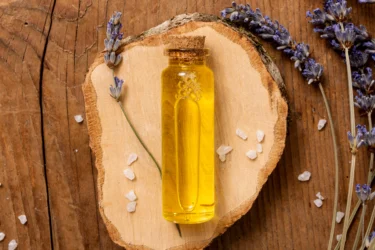
Animal studies showed that lavender oil promotes hair growth7. There is a need for more studies on humans to ensure its effects of lavender oil on humans. However, lavender oil is valuable as a home remedy for thick eyebrows. You may use lavender oil to help grow thicker and darker eyebrows by taking a few drops of lavender oil and massaging it gently onto your eyebrows, then leaving it overnight. Wash it the next morning. Using this remedy consistently might help your eyebrow hair grow.
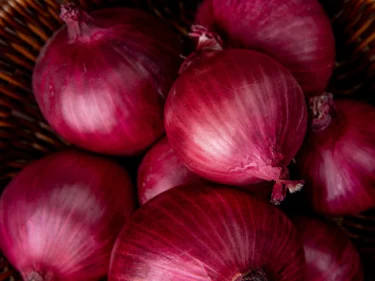
Onion promotes hair growth. It contains many minerals (mainly iron) which help hair grow by providing oxygen to the follicles6. As a remedy for obtaining thicker eyebrows, you can mix the juice of onion with honey and apply it over the eyebrow area. Using this method may prove to be beneficial for growing thick, dense and bushy eyebrows.
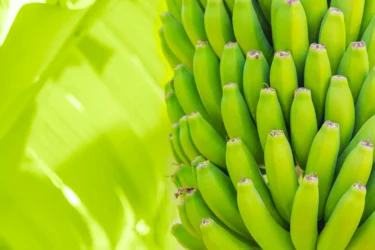
It was found in an animal study that unripe banana has hair growth-promoting activity8. Though there is a need for further human studies, it is good for growing thicker and fuller eyebrows. You can take an unripe banana, peel it, and mash the banana. Mix honey to this and apply it to your eyebrow area. Leave it on for a while, and then rinse it off with cool water. You might find this remedy useful for gaining thicker eyebrows by using it regularly.
Though there are studies that show the benefits of the given herbs and home remedies for getting thick eyebrows, these are insufficient. There is a need for large-scale human studies to establish the true extent of the benefits of these home remedies on human health. Thus, these should only be taken with caution and never as a substitute for medical treatment.
Also Read: Simple Home Remedies For Puffy Eyes
You should seek medical help if you notice the following symptoms as it could indicate a more severe problem:
You must not rely on home remedies alone for thick eyebrows and should consult a qualified doctor for any advice if the symptoms do not improve with home remedies.
Also Read: Effective Home Remedies for Silky Hair
Looking at many others, you might want thicker and bushier eyebrows. However, your eyebrows might not grow exactly as you want them to, leaving you wondering how to make your eyebrows thicker? You might notice a decreased thickness, thinning or loss of eyebrow hair. This might be due to a few conditions like alopecia areata, hormonal disturbances, etc., or you might have naturally thin eyebrows. Nonetheless, there are a few home remedies for thick eyebrows for you to try, such as onion, lavender oil, coconut oil, etc. However, thin eyebrows or loss of eyebrows can be a sign of a medical condition, so you should consult a dermatologist (hair and skin doctor) if you see scales on your skin, notice thinning of scalp hair and have eye problems.
Also Read: Effective Home Remedies For Red Eyes
You can try to make eyebrows thicker by trying out a few home remedies like coconut oil, olive oil, rosemary oil, onion, aloe vera, etc2,8. They are natural and might help you grow thick eyebrows.
No, there are no reports of thickening of eyebrows on the daily application of eyeliner. However, you can try a few home remedies for thick eyebrows like aloe vera, lavender oil, coconut oil, etc2,8.
Thinning of eyebrows is known as madarosis. It can occur in various diseases like hypothyroidism, Graham-little syndrome, Alopecia, blepharitis, etc1. You should consult a doctor to get it checked out if you notice any other symptoms along with it.
Studies have shown that an unripe banana is good for hair growth8. You can take a peeled unripe banana, make a paste of it, mix honey and apply it to your eyebrows. Leave it for some time, then rinse it. It may help you get fuller eyebrows.
There is no evidence of chalk being beneficial for making eyebrows thicker.
1. Kumar A, Karthikeyan K. Madarosis: A marker of many Maladies. Int J Trichology [Internet]. 2012;4(1):3–18. Available from: https://www.ncbi.nlm.nih.gov/pmc/articles/PMC3358936/
2. Sursinh Vala G, Vala GS, Kapadiya PK. Medicinal Benefits of Coconut Oil (A Review paper). Print) Int J Life Sci Res [Internet]. 2014;2:124–6. Available from: https://www.researchgate.net/publication/280574942
3. Tong T, Kim N, Park T. Topical application of oleuropein induces anagen hair growth in telogen mouse skin. PLoS One [Internet]. 2015;10(6):1–17. Available from: https://www.ncbi.nlm.nih.gov/pmc/articles/PMC4462586/
4. Oh JY, Park MA, Kim YC. Peppermint oil promotes hair growth without toxic signs. Toxicol Res [Internet]. 2014;30(4):297–304. Available from: https://www.ncbi.nlm.nih.gov/pmc/articles/PMC4289931/
5. Noreen S. A Close Look at Aloe Vera Barbadensis and It ‘ s Effect on Hair Health. 2020;(July). Available from: https://www.researchgate.net/publication/342588964_A_Close_Look_at_Aloe_Vera_Barbadensis_and_It%27s_Effect_on_Hair_Health
6. Patel S, Sharma V, Chauhan N, Thakur M, Dixit VK. Hair Growth: Focus on Herbal Therapeutic Agent. Curr Drug Discov Technol [Internet]. 2015 Aug 4 [cited 2022 Mar 29];12(1):21–42. Available from: https://pubmed.ncbi.nlm.nih.gov/26058803/
7. Lee BH, Lee JS, Kim YC. Hair Growth-Promoting Effects of Lavender Oil in C57BL/6 Mice. Toxicol Res [Internet]. 2016 [cited 2022 Mar 29];32(2):103. Available from: https://www.ncbi.nlm.nih.gov/pmc/articles/PMC4843973/
8. Savali A, Chitapurkar H, Bhinge S. Evaluation of hair growth promoting activity of Musa paradisiaca unripe fruit extract. J Nat Pharm [Internet]. 2011;2(3):120. Available from: https://www.researchgate.net/publication/272895983_Evaluation_of_hair_growth_promoting_activity_of_Musa_paradisiaca_unripe_fruit_extract
Disclaimer: The information provided here is for educational/awareness purposes only and is not intended to be a substitute for medical treatment by a healthcare professional and should not be relied upon to diagnose or treat any medical condition. The reader should consult a registered medical practitioner to determine the appropriateness of the information and before consuming any medication. PharmEasy does not provide any guarantee or warranty (express or implied) regarding the accuracy, adequacy, completeness, legality, reliability or usefulness of the information; and disclaims any liability arising thereof.
Links and product recommendations in the information provided here are advertisements of third-party products available on the website. PharmEasy does not make any representation on the accuracy or suitability of such products/services. Advertisements do not influence the editorial decisions or content. The information in this blog is subject to change without notice. The authors and administrators reserve the right to modify, add, or remove content without notification. It is your responsibility to review this disclaimer regularly for any changes.
Next Page »« Previous Page